
Georg Nees is one of the three pioneering artists who showed their work in the first exhibitions of computer art in 1965. A mathematician working at Siemens, he created his artworks in one of the first flatbed drawing machines and wrote the first doctoral thesis on computer art. He developed a lengthy career researching computer graphics and wrote extensively about an aesthetics of media and design.
Further reference:
compArt

Nuremberg (Germany), 1926 – Erlangen (Germany), 2016
Georg Nees studied mathematics and physics at the University of Erlangen from 1945 to 1951. Upon completing his studies, he was employed as an industry mathematician at the Siemens Schuckertwerk in Erlangen, where he worked during all his professional career, until 1985. In 1959, he wrote his first programs at the company and in 1964 he was instrumental in the purchase of a Zuse Graphomat Z64 flatbed drawing machine, with which he would create his first algorithmic drawings, using the ALGOL programming language. In the same year, he started his doctoral studies in philosophy under the direction of Max Bense at the Technische Hochschule Stuttgart. Bense invited Nees to show his drawings at the experimental gallery he had set up at the university in what would become the first public exhibition of computer-generated art. Titled computer grafik, the exhibition took place from February 4th to the 19th, 1965 and was accompanied by a small booklet with texts by Bense and Nees, which can be considered the first publication about computer art. Nees also took part in the third landmark exhibition of algorithmic art, Computer-Grafik, alongside Frieder Nake at the Galerie Wendelin Niedlich in Stuttgart, in November 1965. The second show took place in April 1965 at the Howard Wise Gallery in New York, featuring the work of A. Michael Noll and Béla Julesz. Nees, Nake, and Noll have been called the “three big N´s”, the pioneers who first exhibited algorithmic art in 1965. Georg Nees obtained his doctoral degree in philosophy from the University of Stuttgart in 1969 with the thesis Generative Computergrafik, which was later on published as a book and is considered the first doctoral thesis on computer art. Nees continued his research on computer graphics and created architectural drawings in collaboration with the architect Ludwig Rase for the Siemens Pavilion at the Hannover Industrial Fair in 1970, and other drawings for fair pavilions of the Siemens company. After his retirement in 1985, Nees continued his artistic experiments and focused on writing about semiotics and aesthetics for computer generated art and design, publishing several articles and books, among which Formel, Farbe, Form. Computerästhetik für Medien und Design (Springer Verlag 1995).
Besides the historical shows from 1965, Georg Nees has exhibited his work in many venues worldwide. Among the most notable exhibitions are Cybernetic Serendipity (ICA, London, 1968), curated by Jasia Reichardt; Kunst und Computer (Viennna Sparkasse, 1969), curated by Otto Beckmann; Ricerca e Progettazione. Proposte per una esposizione sperimentale (35th Venice Biennale, 1970); Bilder Digital. Computerkünstler in Deutschland 1986 (Gallery of Artists, Munich, 1986), curated by Alexander and Barbara Kempkens; 25 Jahre Computerkunst – Grafik, Animation und Technik (BMW Pavilion, Munich, 1989), curated by Herbert W. Franke; Ex Machina – Frühe Computergrafik bis 1979 (Kunsthalle Bremen, 2007), curated by Wulf Herzogenrath and Barbara Nierhoff-Wielk; and Drawing with Code: Works from the Anne and Michael Spalter Collection (DeCordova Sculpture Park and Museum, Lincoln, Massachusetts, 2011), curated by George Fifield. A major retrospective show of his work took place in 2005 at Kunsthalle Bremen under the title Georg Nees: Künstliche Kunst. Die Anfänge, curated by Bernhard Serexhe. The show travelled to the ZKM in Karlsruhe, where it was presented in 2006 under the title Georg Nees – The Great Temptation. Early generative computer graphics. His work is featured in the permanent collections of major museums, such as the Victoria and Albert Museum in London.
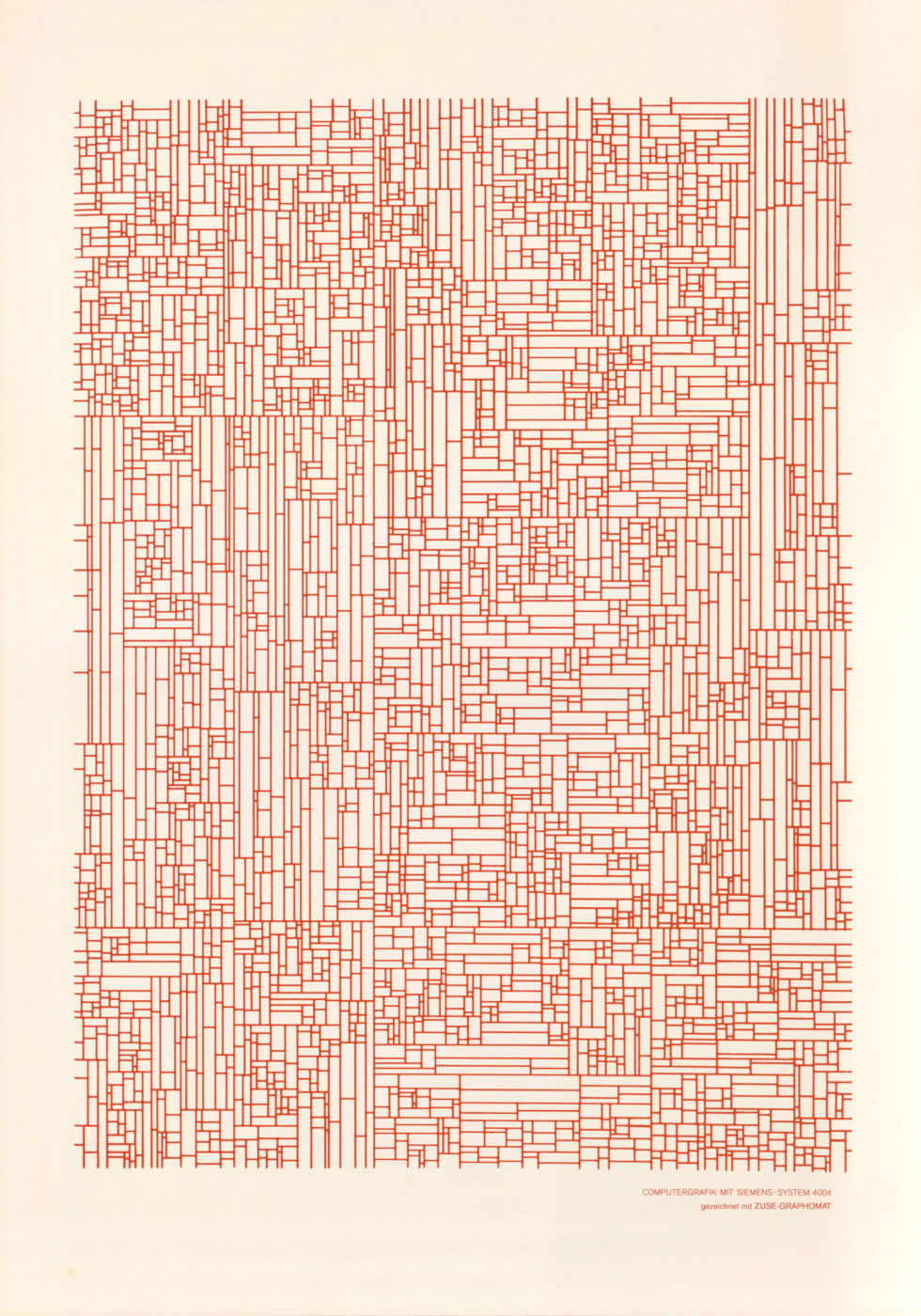
Bense, M. (1965). projekte generativer ästhetik. In: Bense, M. & Nees, G. (eds.). rot 19. Computer-Grafik. Stuttgart: Max Bense, Elisabeth Walther.
Bense, M. & Nees, G. (eds.) (1965). rot 19. Computer-Grafik. Stuttgart: Max Bense, Elisabeth Walther.
Nees, G. (1969). Generative Computergrafik. Berlin: Vice Versa, 2006. [DE]
–– (1995). Formel, Farbe, Form : Computerästhetik für Medien und Design. Berlin: Springer-Verlag [DE]
Von Hermann, H-C. (2006). Künstliche Kunst – eine strukturalistische Tätigkeit. In: C. Hoffmann, G. Nees, H-C. von Herrmann (eds.). Generative Computergrafik. Berlin: Vice Versa, 2006. [DE]
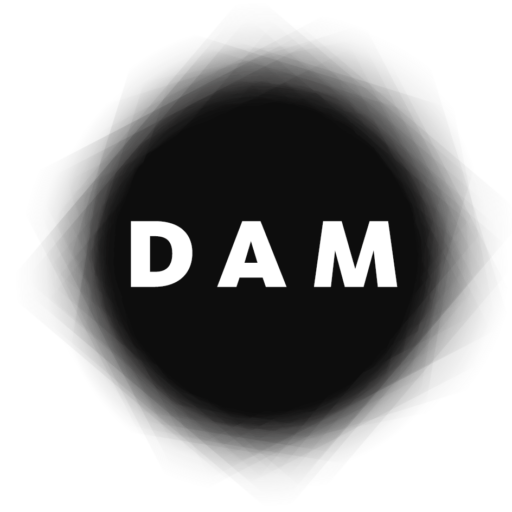
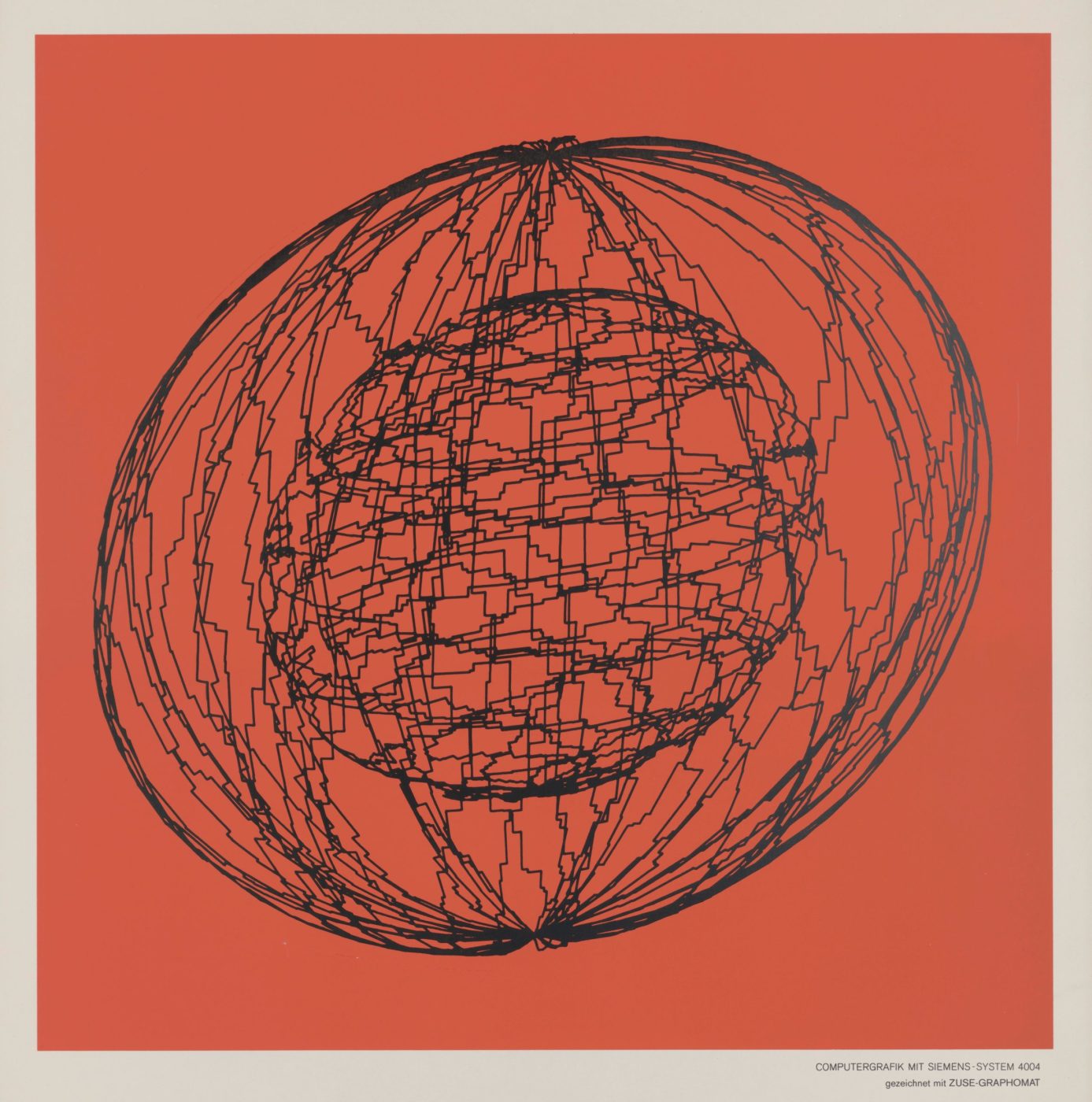
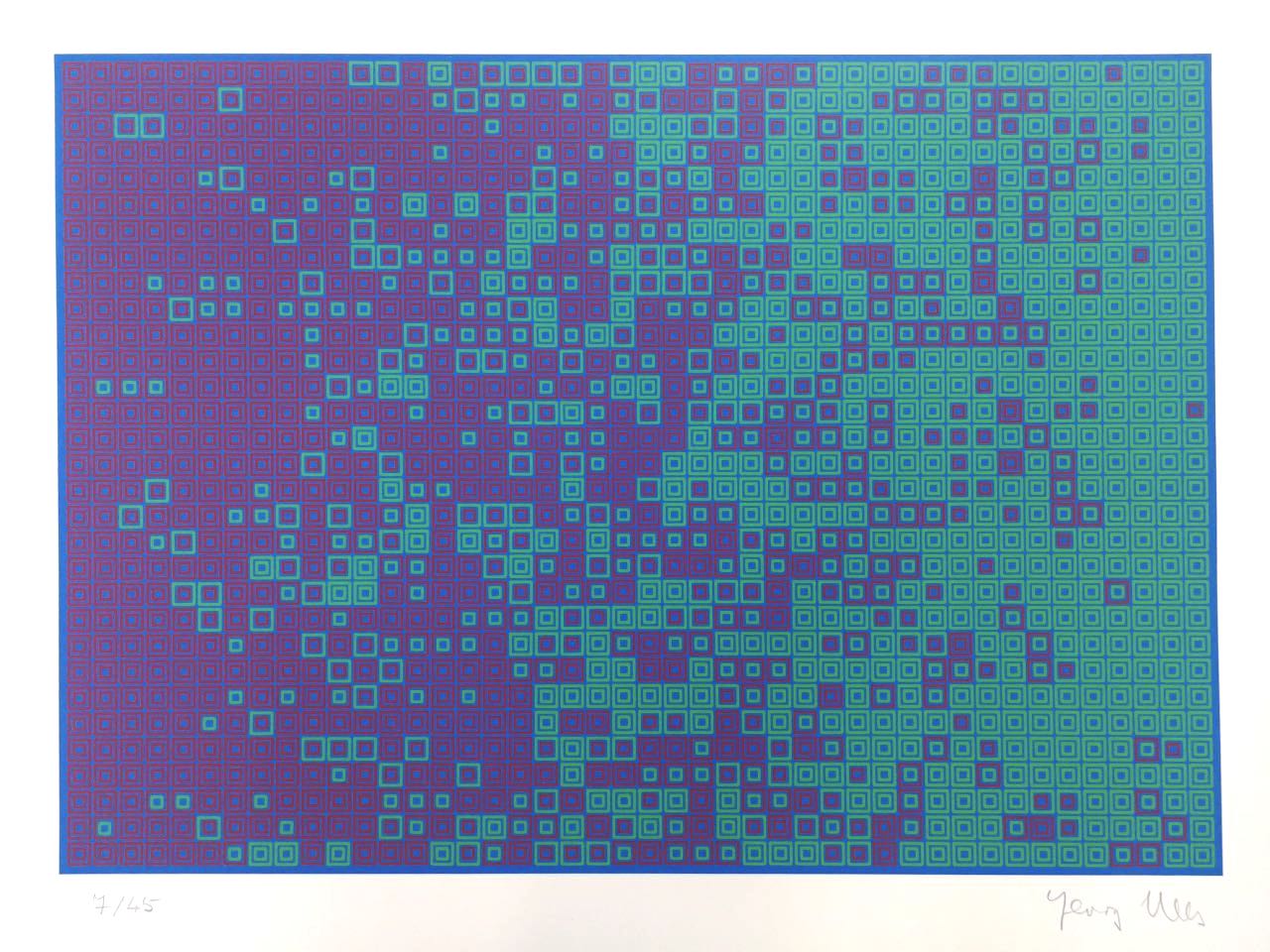

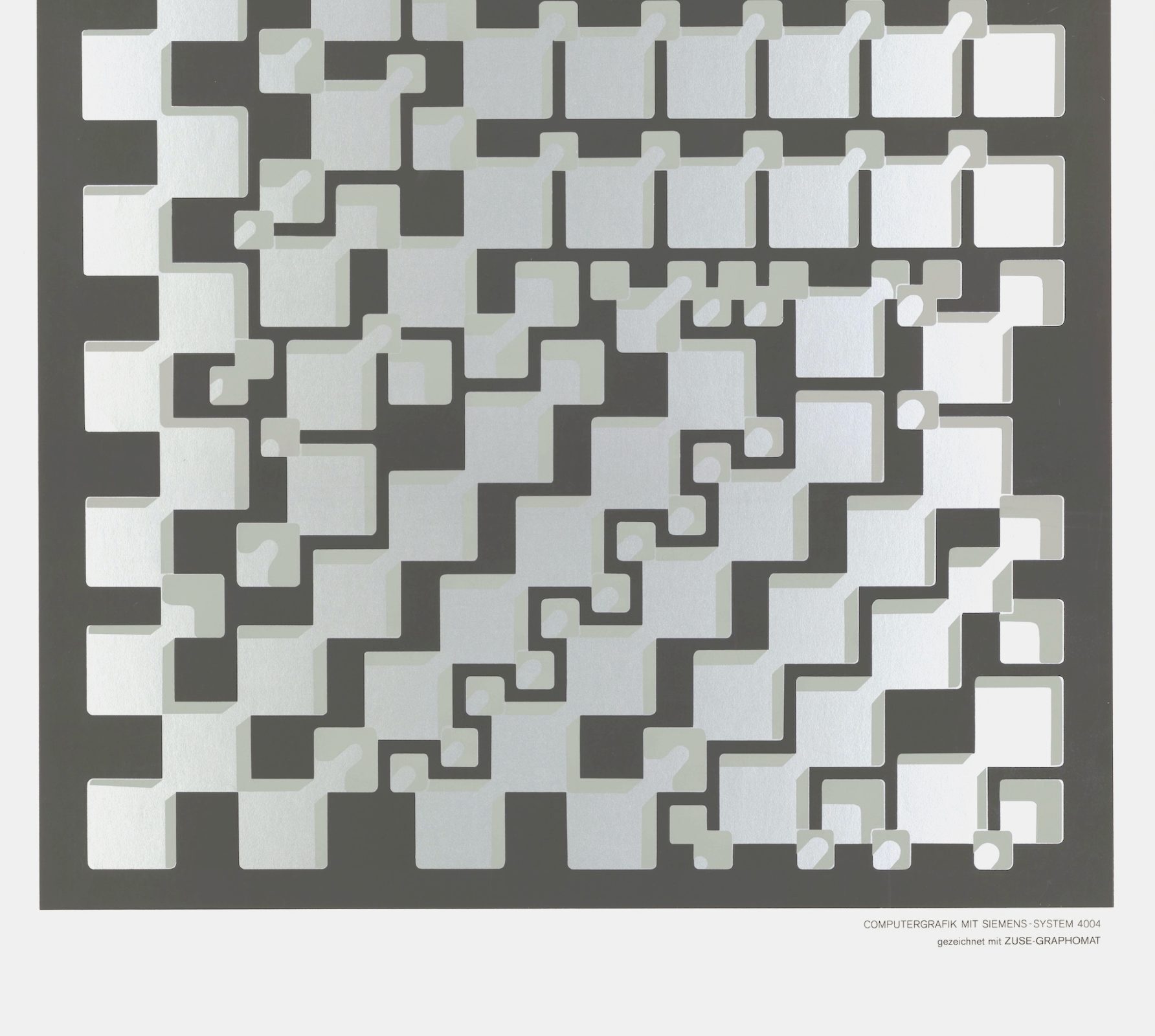
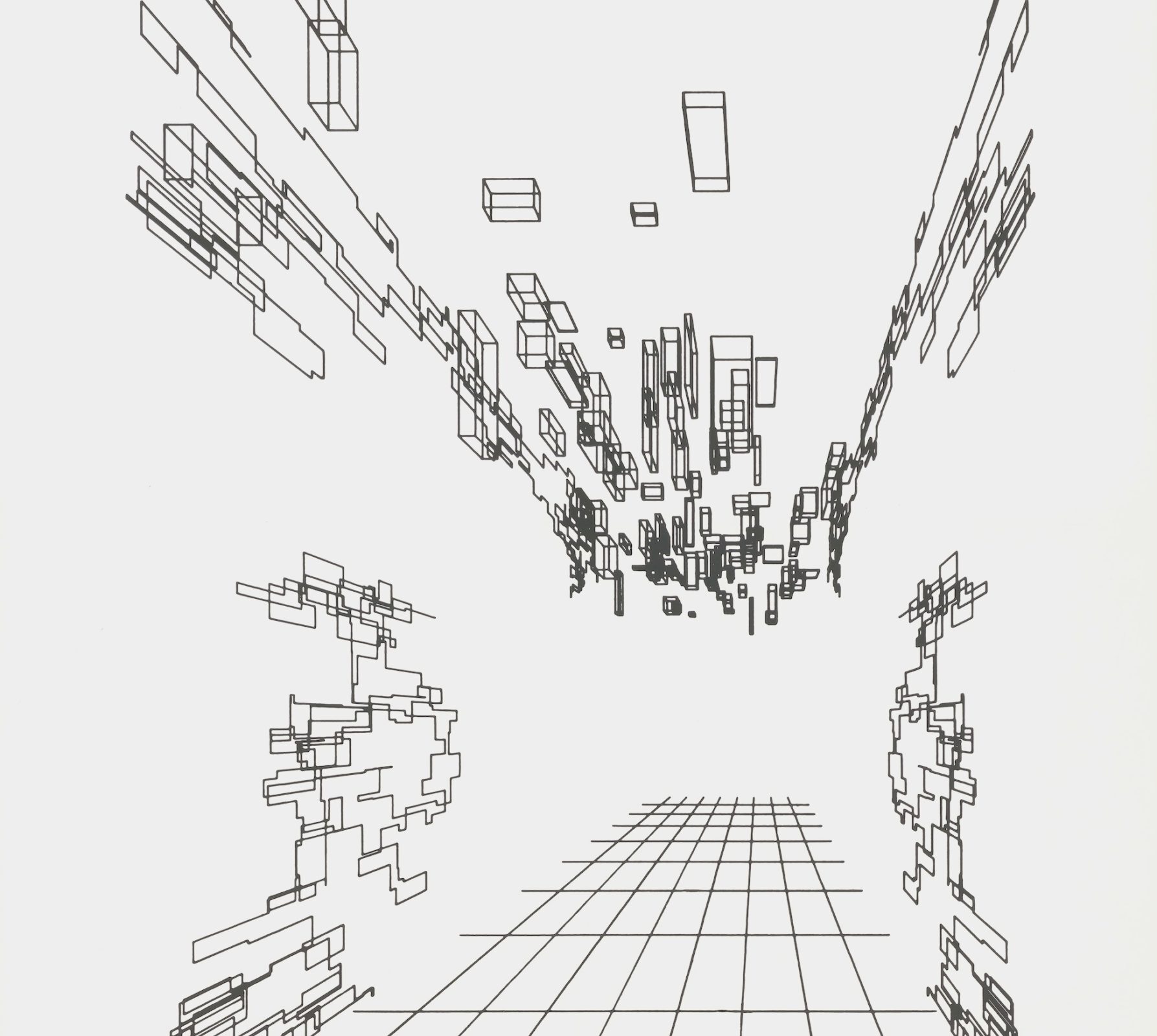

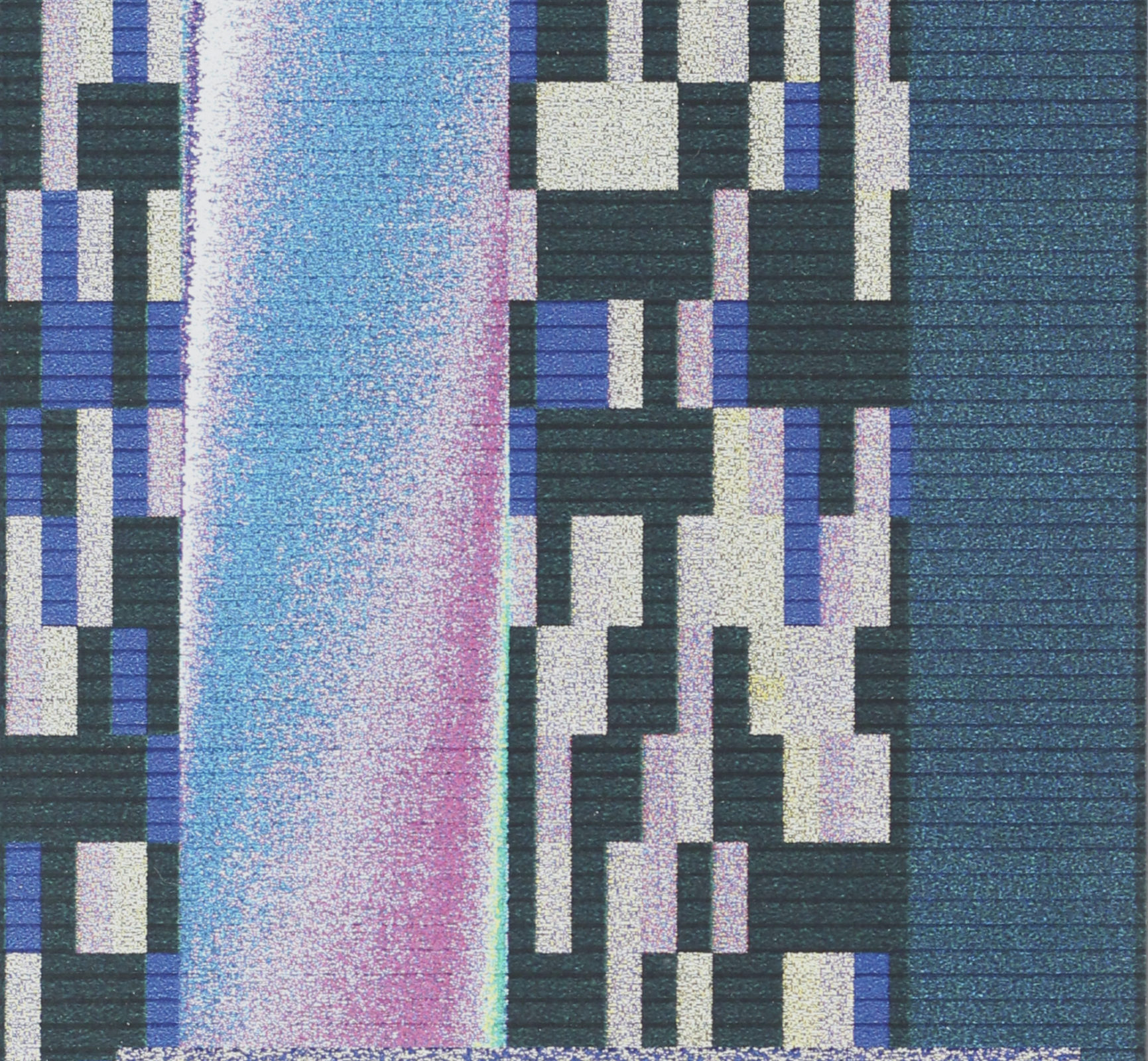
![Nees-Labyrinthine4 Georg Nees, Labyrinthe [4] - Decke fast isotrop, laser print, 25 x 36 cm, 20 Mar 86, signed and dated part of the print Georg Nees, edition of 2.](https://dam.org/museum/wp-content/uploads/2021/01/Nees-Labyrinthine4-2000x1600.jpg)
![Nees-Ellipsoide4 Georg Nees, Ellipsoide [4] Kugel und Ellipsoid im Unterraum, laser print, 25 x 36 cm, 1 Apr 86, signed and dated part of the print Georg Nees, edition of 2.](https://dam.org/museum/wp-content/uploads/2021/01/Nees-Ellipsoide4-2000x1600.jpg)
![Nees-Construct-Decor8 Georg Nees, Construct/Decor [8] Chtonoid, laser print, 25 x 36 cm, 16 Apr 86, signed and dated part of the print Georg Nees, edition of 6.](https://dam.org/museum/wp-content/uploads/2021/01/Nees-Construct-Decor8-2000x1600.jpg)
![Nees-Construct-Decor1 Georg Nees, Construct/Decor [1] Rahmwerk Plus, laser print, 25 x 36 cm, 8 Apr 86, signed and dated as part of the print Georg Nees, edition of 4.](https://dam.org/museum/wp-content/uploads/2021/01/Nees-Construct-Decor1-2000x1600.jpg)